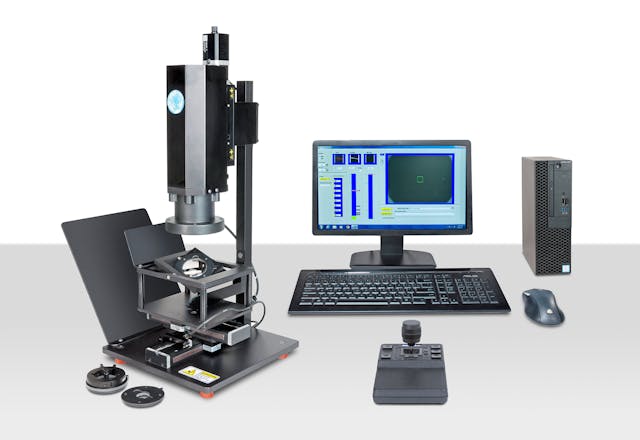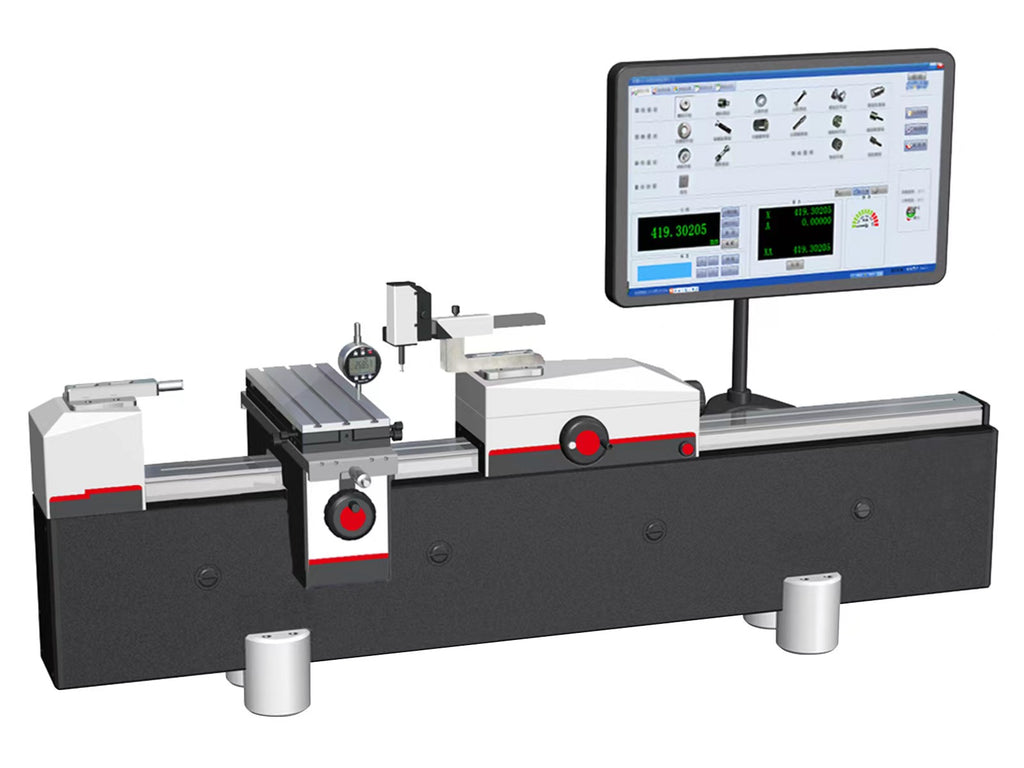Future directions in optical measurement systems for smart factories
Future directions in optical measurement systems for smart factories
Blog Article
The Duty of Optical Dimension Equipments beforehand Assessment Methods
Optical measurement systems have actually changed assessment, bringing a degree of precision that was as soon as inconceivable. As you explore even more, you'll find how these systems are forming the future of measurement and high quality control.
The Advancement of Assessment: A Historic Perspective
As you discover the history of assessment, you'll locate that its development shows humanity's pursuit for precision and standardization. From old people making use of body components as units of dimension to the growth of standard weights and measures, each action shows our desire for precision. The Egyptians developed the pyramids using precise measurements, while the Romans advanced engineering with their advanced measuring devices.
During the Renaissance, clinical innovations moved the focus toward a lot more empirical techniques, paving the means for modern assessment. The introduction of the statistics system in the late 18th century noted a considerable landmark, developing universal standards. Throughout the 20th century, technical improvements additionally transformed metrology, allowing highly exact measurements in different fields.
Today, metrology continues to progress, integrating electronic innovation and automation. This background highlights not just the significance of dimension yet additionally our unrelenting quest of improving precision and uniformity in our increasingly complex world.
Principles of Optical Measurement Systems
Recognizing the principles behind optical dimension systems is necessary for accurate cause width. You'll intend to consider basic optical concepts, dimension accuracy variables, and effective system calibration strategies. Each of these aspects plays a crucial duty in guaranteeing your dimensions are trustworthy and precise.
Basic Optical Principles
While exploring optical dimension systems, you'll come across essential optical concepts that develop the foundation of precise information acquisition. Light behaves in foreseeable methods, and comprehending these actions-- like diffraction, refraction, and reflection-- is essential for reliable dimensions. By mastering these principles, you'll be geared up to leverage optical modern technologies efficiently, leading the method for improvements in width and ensuring your dimensions are both repeatable and trustworthy.
Dimension Accuracy Factors
To accomplish high dimension precision in optical systems, a number of factors come into play, influencing the dependability of your results. Premium lenses and detectors minimize aberrations and sound, guaranteeing your measurements are specific. By attending to these variables, you can enhance the total efficiency of your optical dimension systems, leading to more reliable and exact results in your metrology applications.
System Calibration Strategies
Accomplishing high measurement precision is just part of the formula; correct system calibration methods are similarly important in optical dimension systems. Next, employ known dimensions to verify the system's result and make required improvements. With these techniques, you'll enhance the integrity of your optical measurement system.
Trick Technologies Behind Optical Dimension
Optical dimension systems rely upon numerous crucial technologies that improve accuracy and effectiveness in assessment. One vital modern technology is interferometry, which makes use of the interference of light waves to gauge little displacements and surface area abnormalities with extreme precision. You'll additionally find laser scanning systems, which record in-depth 3D data of items promptly, making them very useful for dimensional analysis.
Furthermore, CCD and CMOS sensors play a significant role in transforming light into electric signals, enabling high-resolution imaging and specific measurements. Advanced formulas for picture processing further improve dimension precision by evaluating data in actual time, filtering system out noise and boosting attributes.
Ultimately, fiber optics offer adaptability and the capability to measure in tough atmospheres while preserving signal honesty. By leveraging these modern technologies, you can accomplish superior cause your width tasks, making sure that your dimensions are both reliable and precise.
Applications of Optical Dimension in Market
As markets increasingly demand precision and performance, the applications of optical measurement systems have become important throughout various fields. In manufacturing, these systems assist you check dimensions and resistances in real-time, making sure quality assurance without taxing manual checks. In the automotive industry, optical dimensions assist in lining up elements with precision, enhancing safety and security and efficiency.
In electronic devices, you're utilizing optical techniques to examine min attributes on circuit boards, discovering flaws that can bring about failings. The aerospace sector take advantage of non-destructive testing techniques, allowing you to check these guys out assess products and elements without endangering their integrity.
Optical measurement additionally plays a crucial function in fabrics, ensuring fabric measurements fulfill specific requirements. optical measurement system. With their capacity to supply high-resolution information promptly, these systems encourage you to make educated choices, enhance processes, and ultimately drive advancement throughout your market
Enhancing Precision and Effectiveness in Measurements
When you assume about improving precision in dimensions, precision in your measurement methods is vital. By streamlining these processes, you can accomplish quicker results without compromising high quality. Allow's explore exactly how adopting innovative optical dimension systems can boost both precision and efficiency in your work.
Precision in Measurement Techniques
Precision in measurement strategies is crucial for attaining trustworthy outcomes in width, especially given that tiny inconsistencies can lead to considerable errors. By making use of advanced optical dimension systems, you can boost the accuracy of your dimensions. In enhancement, specific measurements allow you to keep quality control, ensuring that products meet rigorous specs.
Streamlining Dimension Processes
To enhance precision and performance in dimensions, streamlining your measurement processes is crucial. Beginning by adopting optical measurement systems that offer real-time data, reducing the moment invested in hand-operated recording. These systems usually incorporate seamlessly with existing software application, enabling you to automate information collection and evaluation.
Next, standardize your measurement protocols. By implementing consistent treatments, you decrease irregularity and boost repeatability. Don't neglect to frequently adjust your equipment to guarantee its accuracy.

The Influence of Optical Dimension on R & D
As researchers undertaking to push the boundaries informative post of technology, optical measurement systems have actually become important devices in the growth procedure. These systems supply you with specific, real-time data that improves your ability to examine complicated materials and frameworks. In various areas, from biotechnology to aerospace, you count on optical measurements to maximize designs and enhance item performance.

With high-resolution imaging and non-contact techniques, you can minimize sample disturbance, enabling more accurate results. This capability to catch minute details increases your R&D cycle, letting you repeat layouts swiftly and effectively. Additionally, optical dimension fosters partnership across disciplines, as the information generated is usually conveniently interpretable and shareable.
Ultimately, incorporating optical measurement systems right into your study not only increases productivity yet additionally deepens your understanding of the sensations you research. By leveraging these sophisticated methods, you're better furnished to introduce and stay ahead in a competitive landscape.
Future Trends in Optical Measurement Equipments
With the rapid innovation of technology, you're most likely to see substantial changes in optical dimension systems that will redefine their application across various industries. You'll observe a move toward increased automation and assimilation of man-made knowledge, permitting for real-time information analysis and boosted accuracy. Miniaturization is another trend; small devices will certainly allow measurements in tighter rooms, making them suitable for fields like aerospace and biomedical applications.
Expect to see systems that can run in difficult atmospheres, providing trustworthy dimensions in severe conditions. As these innovations merge, you'll locate that optical measurement systems not just enhance precision however likewise enhance operations, eventually driving innovation and effectiveness in your projects.
Regularly Asked Concerns
Exactly How Do Optical Measurement Equipments Compare to Typical Dimension Techniques?
Optical measurement systems use higher accuracy and faster outcomes compared to conventional methods. You'll discover they catch even more data factors precisely, reducing human error and enhancing reliability, making them a favored option in different applications.
What Industries Benefit Most From Optical Measurement Equipments?
You'll discover markets such as aerospace, auto, and electronics benefit most from optical measurement systems. These sectors depend on precise measurements to assure top quality and performance, enhancing performance and lowering expenses through sophisticated innovation.

Are Optical Measurement Systems Expensive to Execute?
Optical dimension systems can be expensive to carry out, but their accuracy and performance typically warrant the price. Investing in such modern technology can cause significant lasting financial savings and improvements in high quality across various applications.
What Skills Are Needed to Operate Optical Dimension Systems?
To operate optical dimension systems, you'll need solid logical abilities, interest to information, and proficiency in software application devices. Experience with optics and an understanding of measurement principles will certainly also improve your effectiveness and effectiveness.
How Do Environmental Elements Impact Optical Measurements?
Ecological elements like air, temperature, and humidity high quality can distort optical dimensions. You'll see variants in accuracy as a result of light disturbance or refraction. optical measurement system. Preserving secure problems is important for trustworthy and accurate optical dimension results
Verdict
In recap, optical dimension systems are reinventing assessment by offering unparalleled accuracy and effectiveness. As you explore future fads, you'll see exactly how the combination of AI and automation will proceed to raise measurement practices, driving innovation and improving top quality control.
Accomplishing high measurement precision is just part of the formula; appropriate system calibration techniques are just as essential in optical dimension systems.When you think concerning enhancing precision in dimensions, precision in your dimension methods is essential. By making use of innovative optical measurement systems, you can boost the accuracy of your dimensions.To improve accuracy and efficiency in measurements, simplifying your measurement processes is necessary. How Do Optical Dimension Equipments Compare to check my blog Typical Dimension Techniques?
Report this page